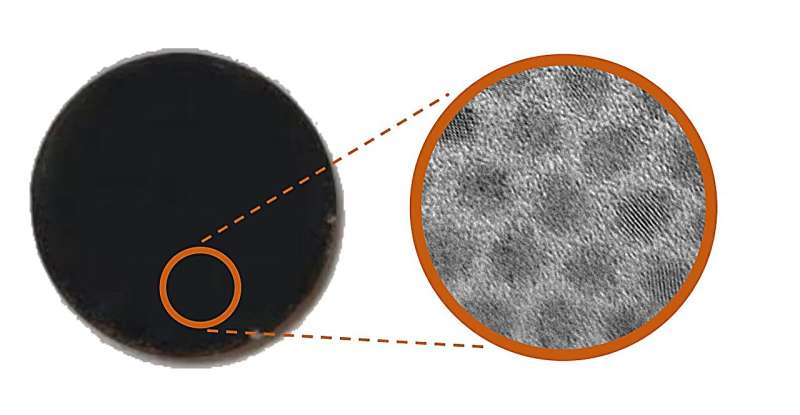
September 2, 2024 by Shandong University
Collected at: https://phys.org/news/2024-09-quantum-dot-enabled-infrared-hyperspectral.html
Near infrared (NIR) hyperspectral imaging is a highly promising detection technology capable of capturing detailed 3D spectral-spatial information, facilitating the identification and characterization of materials and targets based on their spectral signatures.
Widely utilized across various industries such as chemistry, agriculture, and military, this technology relies on strategies like dispersive optics and narrow-band light filters.
However, limitations exist in these approaches. Additionally, the fabrication of large-scale InGaAs detector arrays poses challenges, necessitating the development of new experimental methods and algorithms to advance infrared hyperspectral imaging technology in terms of miniaturization and cost-effectiveness.
In a paper published in Light Science & Applications, a team led by Professor Baoqing Sun and Yuan Gao from Shandong University introduce a novel method for encoding near-infrared spectral and spatial data.
Through the integration of self-assembled colloidal quantum dot (CQD) color filters and a digital micromirror device (DMD), they accomplished cooperative reconstruction of spectral and image data via single-pixel detection. Leveraging the tunable absorption curve of CQDs across a broad wavelength range, they engineered NIR filters based on the self-assembly structure of CQDs, controlled by surface characteristics and solution evaporation rate.
The characteristic exciton absorption structure of CQDs’ transmission spectral lines endowed them with greater spectral coding randomness and efficiency compared to traditional color filters. Employing CQDs and DMD for spectral and spatial information encoding, along with a single-pixel detector and compressed sensing algorithm, facilitated the association of the CQD filter’s transmission spectrum with the projection pattern generated by the DMD.

This enabled the acquisition of high-resolution NIR hyperspectral images. Each pixel, embodying a complete spectral feature, enabled the simultaneous reconstruction of spectrum and spatial dimension, rooted in the principle of single-pixel detection.
The authors write, “By combining a single-pixel detector with CQD filters, we eliminate the need for a costly 2D arrayed sensor typically employed in conventional hyperspectral imaging systems, thereby reducing system complexity and cost. The attained spectral reconstruction and spatial resolving capabilities showcase the effectiveness of our system and the promising potential for affordable and portable hyperspectral imaging devices.
“Moreover, our strategy integrates both spectral and spatial encoding, potentially allowing for simultaneous and intertwined reconstruction of both spectra and images through the direct application of a compressed sensing algorithm on the hyperspectral data cube. This approach differs from applying the algorithm separately to spectral and spatial dimensions, offering the potential for a more efficient hyperspectral imaging process.”
More information: Heyan Meng et al, Quantum dot-enabled infrared hyperspectral imaging with single-pixel detection, Light: Science & Applications (2024). DOI: 10.1038/s41377-024-01476-4
Journal information: Light: Science & Applications

Leave a Reply